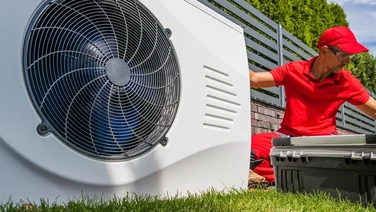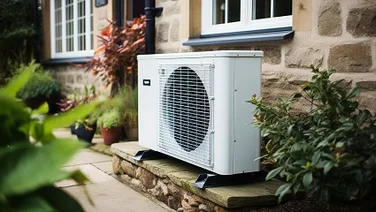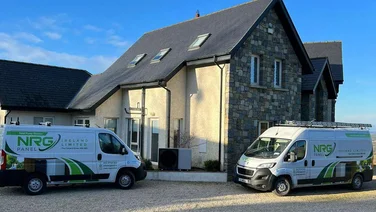New heat pump technology could make them suitable for more homes in the UK.
A main blocker to installing heat pumps is that they often require extra renovations to make homes suitable for them, mainly because of the temperature heat pumps run at.
Heat pumps typically produce heat at lower temperatures than gas boilers – 45°C to 55°C compared to 60°C to 80°C. This means that to achieve the same level of warmth with a heat pump as they would with a boiler, homeowners often have to put in larger radiators, and improve their home’s insulation.
Given the already high costs of heat pumps compared to boilers, paying extra for home renovations makes them less attractive for some homeowners.
However, innovations in high temperature heat pumps could mean that these extra renovations are no longer needed. This type of heat pump produces heat at similar levels to a traditional boiler, but in the past high temperature heat pumps have been less efficient than standard heat pumps, so the running costs were higher.
However, that’s all changing. Innovations in heat pump technology have raised their running temperature, leading to high temperature heat pumps that work almost as efficiently as standard ones.
The latest models can reach up to 85°C, as is the case for Swedish company Vattenfall’s new model, writes Paul Simons, a meteorological correspondent at The Times.

How can heat pumps now run at higher temperatures?
Heat pumps can now run at higher temperatures because they use new types of refrigerant.
Refrigerants play a key role in a heat pump’s functioning; they’re a fluid that acts as a receptacle for the warmth heat pumps extract from the environment. The refrigerant gets compressed to heat it up even further, and that heat gets transferred to the property’s heating network.
Most next generation high temperature heat pumps now use R290 or R32 type refrigerants, which bring their running temperature up to 65°C, in line with traditional boilers.
Even better, Vatenfall has developed the R744 refrigerant, which achieves a temperature of 85°C, according to Simons.
With the efficiency of new high temperature heat pumps now up to a third higher than older types, they could become an attractive option for homeowners who have difficulty making the necessary changes to accommodate a standard heat pump.
You can find out if your home is suitable for a heat pump by going to our guide.
How could new high temperature heat pumps benefit UK homeowners?
This new heat pump technology could benefit UK households in two ways.
Firstly, it could help dispel reservations many homeowners have about installing heat pumps. As Paul Simons notes in his article, many people in the UK have doubts about whether a heat pump will actually be able to heat their home, “particularly in the face of the sort of cold weather gripping the country”.
To be clear, regular heat pumps work in cold weather, even if they produce low temperature heat, but they do rely on properties being well insulated to achieve similar levels of warmth as a boiler.
Unfortunately, a lot of UK housing stock isn’t suitable for heat pumps in its current state, because it’s too poorly insulated, which leads us to the second way UK homes can benefit from new heat pump technology: it’ll make installation easier.
A little under half of homes in the UK don’t meet the government’s energy efficiency standards, according to the Energy and Climate Intelligence Unit (ECIU). Most are in band D of the Energy Performance Certificate (EPC), one of the lowest bands, and the government wants to get them up to a C.
Doing this requires putting in measures such as loft or roof insulation, cavity wall insulation, or double glazing. Whether you’re installing a heat pump or not these are useful home improvements, that’ll save you energy and money in the long run.
However, these improvements can be expensive, and take time, especially in the case of listed buildings or homes in conservation areas, which have limitations on what type of changes can be made to them.
New high temperature heat pumps could push more people to replace their boiler with a heat pump, by improving customer confidence in the technology, and making the installation process easier.
Doing this is a key part of the government’s strategy to decarbonise UK heating to reduce the country’s carbon emissions.






